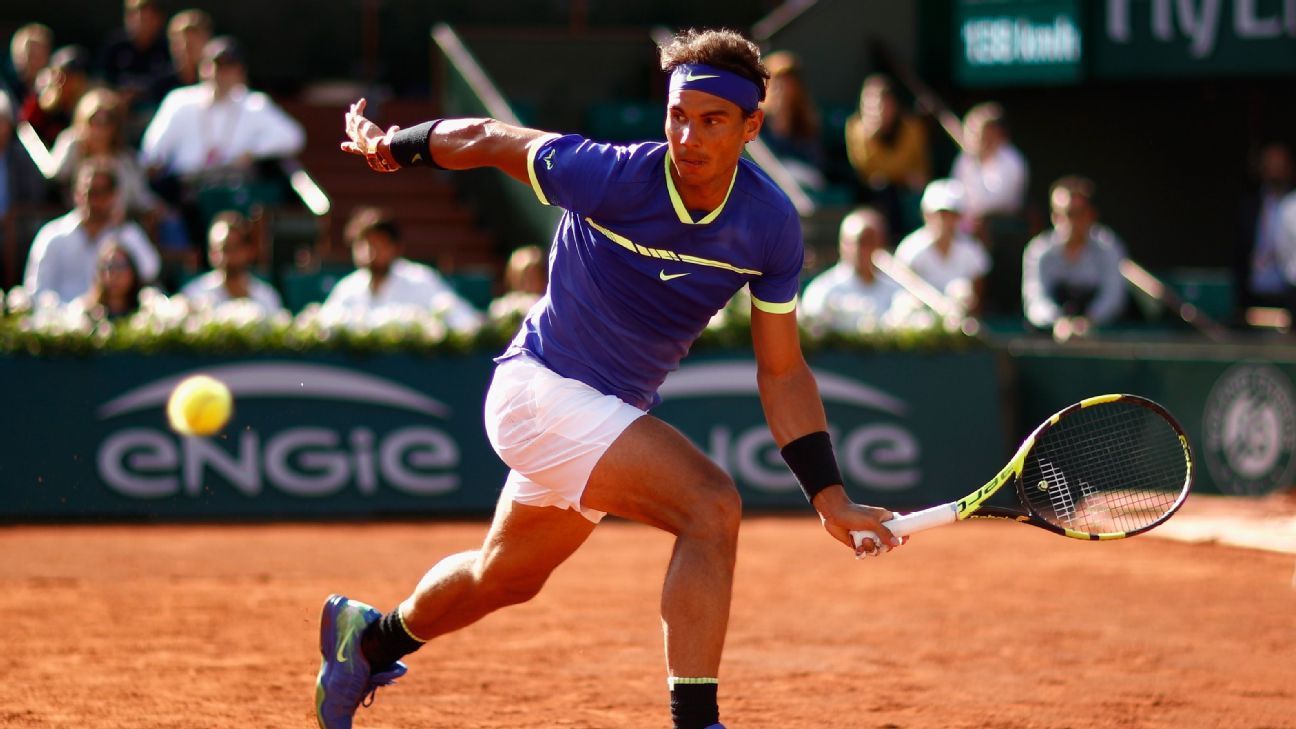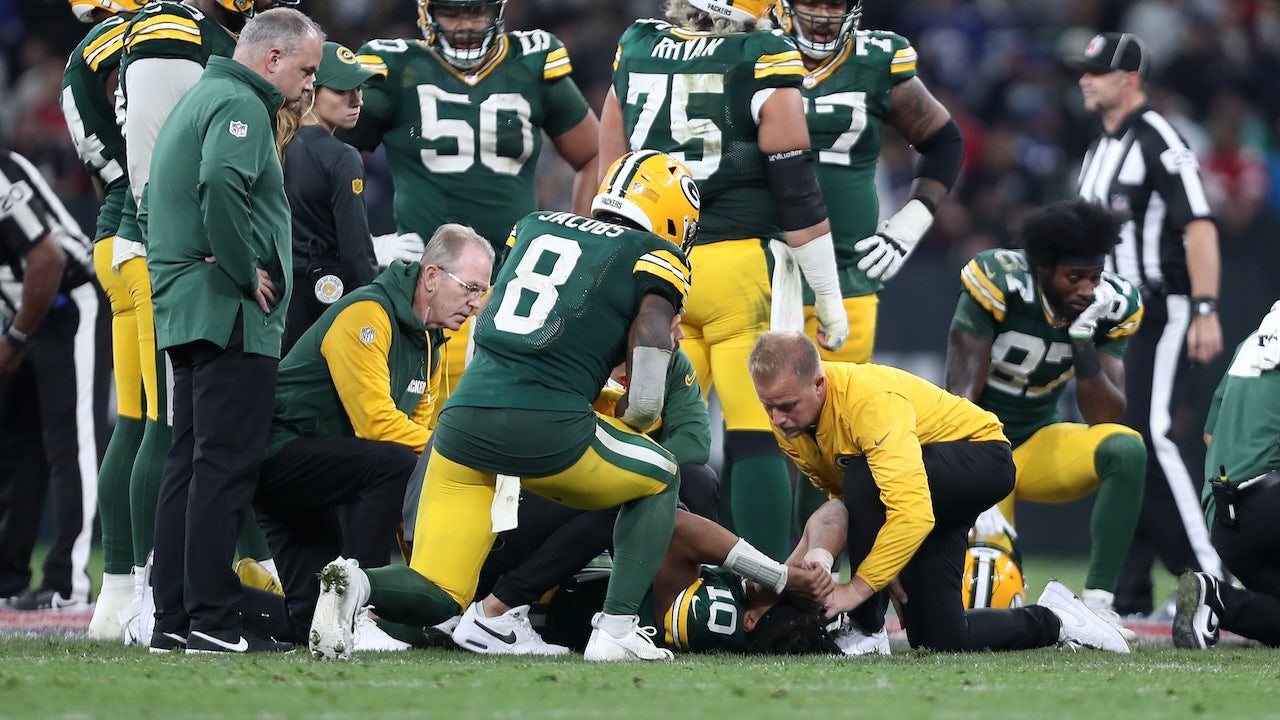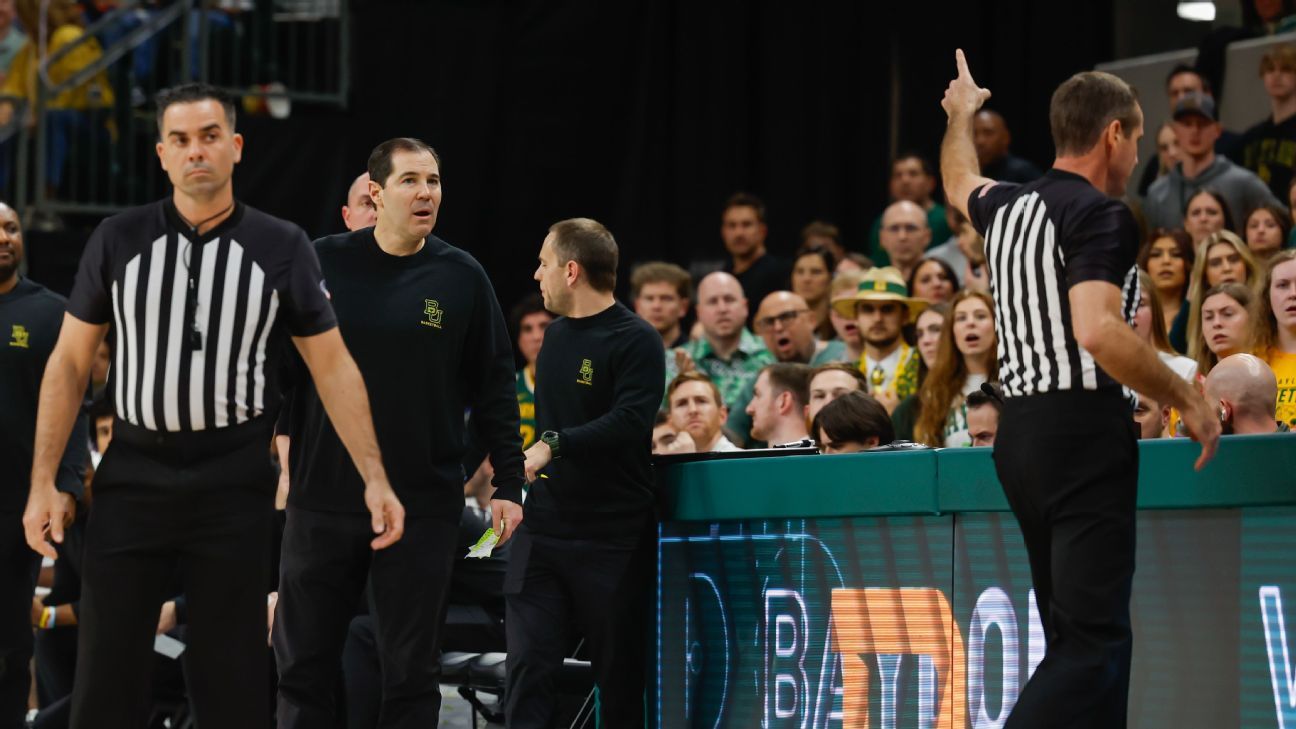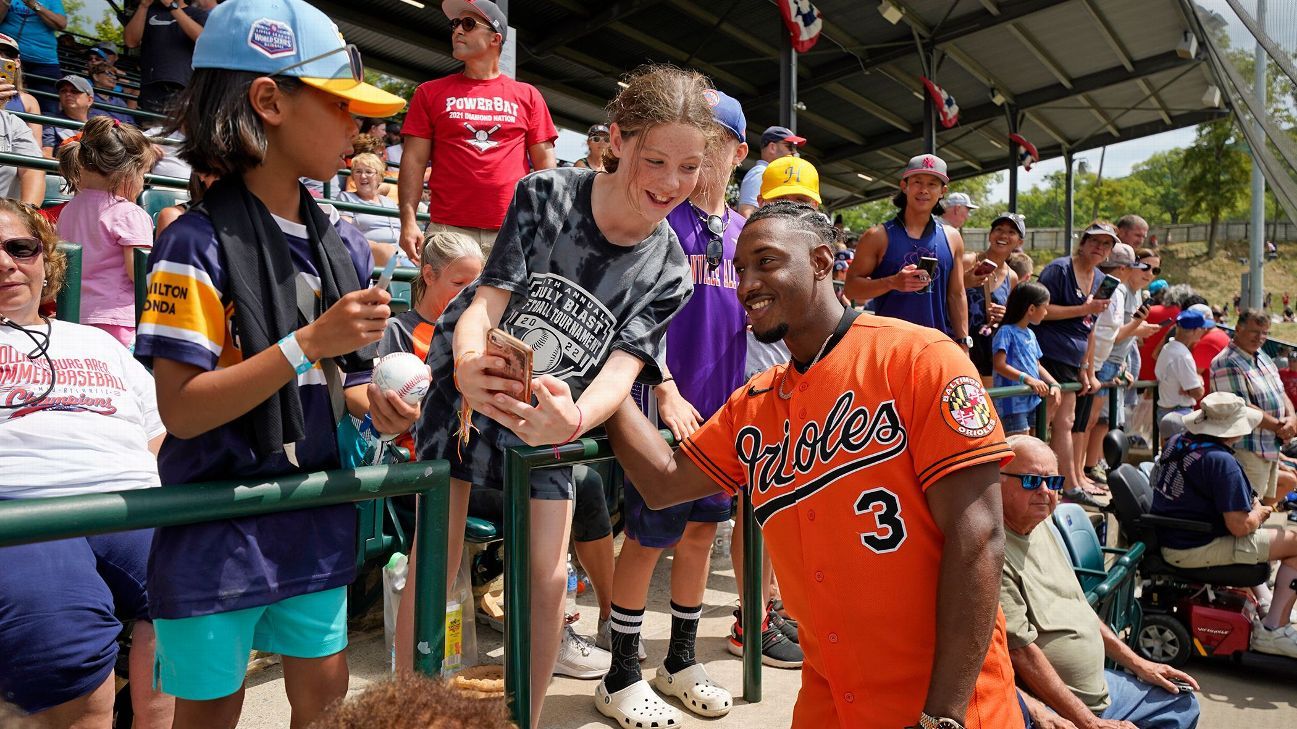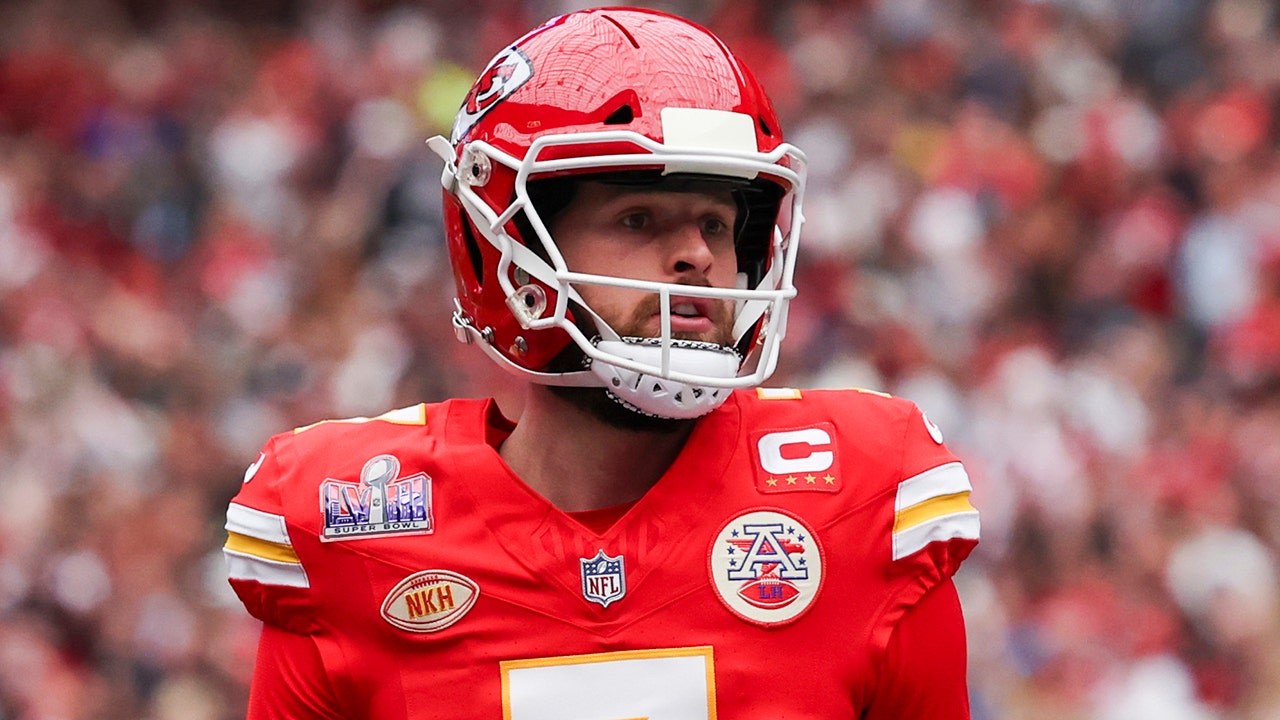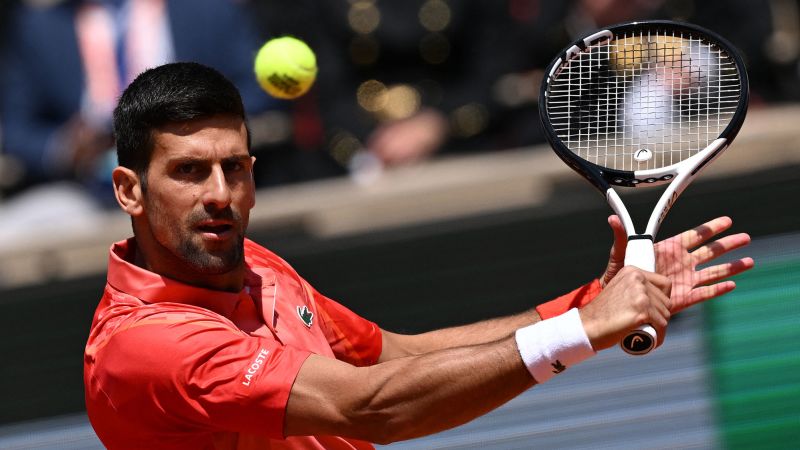Rafael Nadal broke mathematics. That's the best compliment I can think of to give an athlete in any sport.
Numbers are how I make sense of the world. Through them, you can come to understand how a game is played and what is most important in it. Each sport has its statistical guidelines, its essential categories and its unbreakable records. And over the course of what will end up being a 23-year career, as Roger Federer broke geometry and Novak Djokovic broke the laws of flexibility and fitness, and Andy Murray, trying so hard to reach the top of the sport, ended up breaking to himself: Nadal did absolute nonsense with the numbers that define tennis.
Nadal will retire in the coming days, weeks or months. He has committed to playing in the Laver Cup this fall. He has suggested that he hopes to participate in some capacity in the Paris Olympics this summer. We don't know exactly where the end will come, but for every tournament he participates in, it's almost certain that he will do it for the last time. And with the French Open starting Sunday, that means the greatest clay-court player of all time, who has won at Roland Garros an absolutely impossible 14 times, will also play there for the last time. It makes me want to reflect a little.
And that means talking numbers.
Right Domination
You would love to get more winners than your opponent. He suffers fewer mistakes. Land more first serves that cannot be returned. But while most common tennis statistics track how points ended, tennis players are much more concerned with how points are constructed. That may mean moving your opponent as much as possible, or targeting your opponent's weaknesses, whatever they may be. But on a macro level, building points can often mean simply preparing to hit more forehands than your opponent. Even if your backhand is excellent, and even if your forehand is merely average, the backhand is still a more awkward shot, and it's usually up to you to manipulate the court in a way that keeps you swinging from the forehand side.
Nadal was never the biggest hitter or the most aggressive player on the circuit. His serve speed never exceeded 110 mph. While a big server like Andy Roddick or Pete Sampras hit aces between 13 and 15% of the time, Nadal did it about 4%. While a big hitter like Ben Shelton or Stan Wawrinka could score winners with 34-35% of points, Nadal was around 28-29%, better than most, but not a statistical standout. But because of his left foot, and because he had the best wrists in the history of the sport and could generate absurd torque with his topspin, he could imprison his opponents with his backhand for as long as he wanted. .
Tennis Abstract's amazing match charting project has collected manual data from over 13,000 matches and eight million shots in total. It gives us a look behind the hood of tennis and reveals one of Nadal's superpowers.
In 641 recorded matches, Roger Federer hit forehands on 48.8% of his groundstrokes. In 533 matches, Novak Djokovic scored 48.9%. In 302 games, Andy Murray scored 49.1%. Three of the best players the sport has ever produced were looking for a 50-50 split here.
Meanwhile, in 478 recorded matches, Nadal hit forehands 55.0% of the time. In a sport where even earning one more point for every 50 you play can skyrocket you in the rankings, that's a world Of diference. Nadal had many ways to win a point. His defense was second to none, well, maybe second only to Djokovic, and we all have a nightmare list of otherworldly passing shots Nadal delivered to our favorite player. You don't win 22 Slams if you're not ridiculously complete.
But when in doubt, Nadal could simply smash forehands non-stop into the backhand corner against right-handed opponents (and most opponents are right-handed). While most players find a repeatable advantage in figuring out how to win points quickly (after all, more than two-thirds of all points last four shots or less), Nadal won just 51% of points at 0-4 shooting. But he won 54% of points with 4-6 shots, 55% of points with 7-9 shots, and 54% of points with 10+ shots. He would lean on you and eventually you would fall.
Nadal can almost also be blamed for the demise of the one-handed backhand. With the torque and height his forehand generated, even Federer, with almost the most aesthetically pleasing one-handed shot of all time, couldn't generate adequate power with a topspin backhand or kill the rhythm and reset the point with a backhand. chopped up. Nadal hit a higher percentage of his forehands than Federer in 25 of the 35 matches recorded on Tennis Abstract, and while Federer typically hit about 37% of his backhand, he was lucky to hit 20% against Nadal. In those 35 matches, Federer was 5-5 when he could cut at least 20% of the time and 8-17 when he couldn't.
And if Federer couldn't counter this weapon, then what chance did one-handed backhand craftsmen like Stefanos Tsitsipas (2-7 all-time against Nadal) or Grigor Dimitrov (1-14) have? That Dominic Thiem was able to single-handedly go 6-10 against Nadal was notable, but (a) he only went 1-5 in best-of-five matches, and (b) the spin Thiem generated in response was unusual. . It may not be a total surprise that he ended up with the wrist problems that are ending his career this year.
But it goes beyond the rallies. Think about what it means to be able to knock an opponent off the court with your absurd left kick serve on the advantage court, where the vast majority of break points you'll face will come. While righties can do that in the two field, they have less of an advantage in the plus field. And while all points matter, in tennis some matter more than others.
Large first serve percentage on break points (via Tennis Abstract): Nadal 60%, Federer 47%, Djokovic 46%, Murray 42%
Saved Break Points: Federer 67%, Nadal 66%, Djokovic 65%, Murray 62%
With a much slower serve than Federer, Nadal was almost equally adept at saving break points.
Titles
Nadal is likely to finish his career with 92 ATP titles. He's obviously an impressive number, but he ranks just fifth all-time behind Jimmy Connors (109), Federer (103), Djokovic (98) and Ivan Lendl (94). But that left kick was patently unfair on clay courts, where he set records that may never be broken.
Not only has he won the most French Opens; He has earned more than twice as much as anyone else in the Open era. Bjorn Borg, the most dominant figure during tennis' explosion of popularity in the late 1970s, won six titles at Roland Garros. On the women's side, Chris Evert won seven. If we go back to the beginning of the 20th century, long before there was any kind of formality on the tennis circuit, a man named Max Decugis won eight. Nadal won 14.
Since the 1910s, only one man has won more than three Monte Carlo Open titles: Nadal, who won elevenincluding a streak of eight in a row.
Only two people have won more than three Italian Opens: Djokovic has six and Nadal has 10. He also has the most Madrid Open titles, but somehow the fact that he has won only five of them seems disappointing. That's what he did to title mathematics. “Five titles in one of the sport's biggest clay court events? I guess that's decent.”
As he approaches his final French Open, Nadal is 539-66 all-time on clay. That's a winning percentage of 0.891, which is pretty ridiculous in itself. But it includes a 72-25 record from 2001-2003 and a 5-3 record this year. Between the beginning and (presumably) end of his career, he went 462-38, a winning percentage of 0.924. He was undefeated on clay in 2006 and 2010, lost only once on five occasions (2007, 2008, 2012, 2017 and 2018) and lost only twice on five occasions (2005, 2009, 2011, 2013, 2022). Quick reminder: he played in the same era as what could have been the other two best male tennis players of all time. And he still owned about a third of the tennis calendar for almost two decades!
And if?
In fact, when we talk about any of the Big Three (Federer, Nadal and Djokovic) it's easy to get caught up in the sheer volume of their individual achievements. But the fact that they accomplished all of these things despite having to share the stage with each other is almost disorienting. And it leads us to some spectacular what-if scenarios.
Nadal will retire with the second-most men's Slam titles in history (22). But he lost four Slam finals to Federer and four more to Djokovic. He also lost twice to Djokovic in the semifinals of a Slam that Djokovic ended up winning.
Federer won 20 Slam titles, but lost six Slam finals to Nadal (four at the French Open, plus one at Wimbledon (you may remember that one) and one at the Australian Open) and another four to Djokovic. He also lost to one of them seven times in the semifinals of a Slam that the victor would win.
At 24, Djokovic will end up winning the race for Slam titles. But he still lost four finals to Nadal and one to Federer, and yet he lost five semifinals to the eventual Slam winner.
Without a doubt, each of these titans had an effect on each other. Nadal had to aspire to the level that Federer first set and then create a game that could surpass it. Then Djokovic did the same. The fact that everyone had to find ways to beat each other inevitably raised each of their individual games. But it's impossible not to think about the totals one of these players could have generated if one of the others had decided to take up, say, basketball or golf or something.
one last dance
Mathematics can be terribly cold. I can use statistics to point out how much Nadal's immortal comeback game and defense have fallen during his latest return from his latest round of injuries. In 2018, when he went 26-1 on clay, he broke serve 47% of the time and won 48% of return points; This year he is at 30% and 40%, respectively. He still spends a lot of points looking like the version of himself we've grown accustomed to, but the cumulative effects of age and injuries are pretty clear. And the fact that he drew with Alexander Zverev in the first round is pretty cruel.
Zverev has won three of the last four complete matches the two have played, including one on clay. He lands the most first serves of any player in the top 50 and holds serve longer than anyone besides Jannik Sinner (the best player of 2024 so far) and Hubert Hurkacz, who defeated Nadal off court 6- 1, 6-3 in Rome last year. week.
The math tells us some pretty dire things about what will likely happen when Zverev and Nadal meet. But if there is any hope of seeing Nadal make one last run in Paris, it comes from a pretty obvious place: math has never mattered much when Nadal is involved.

